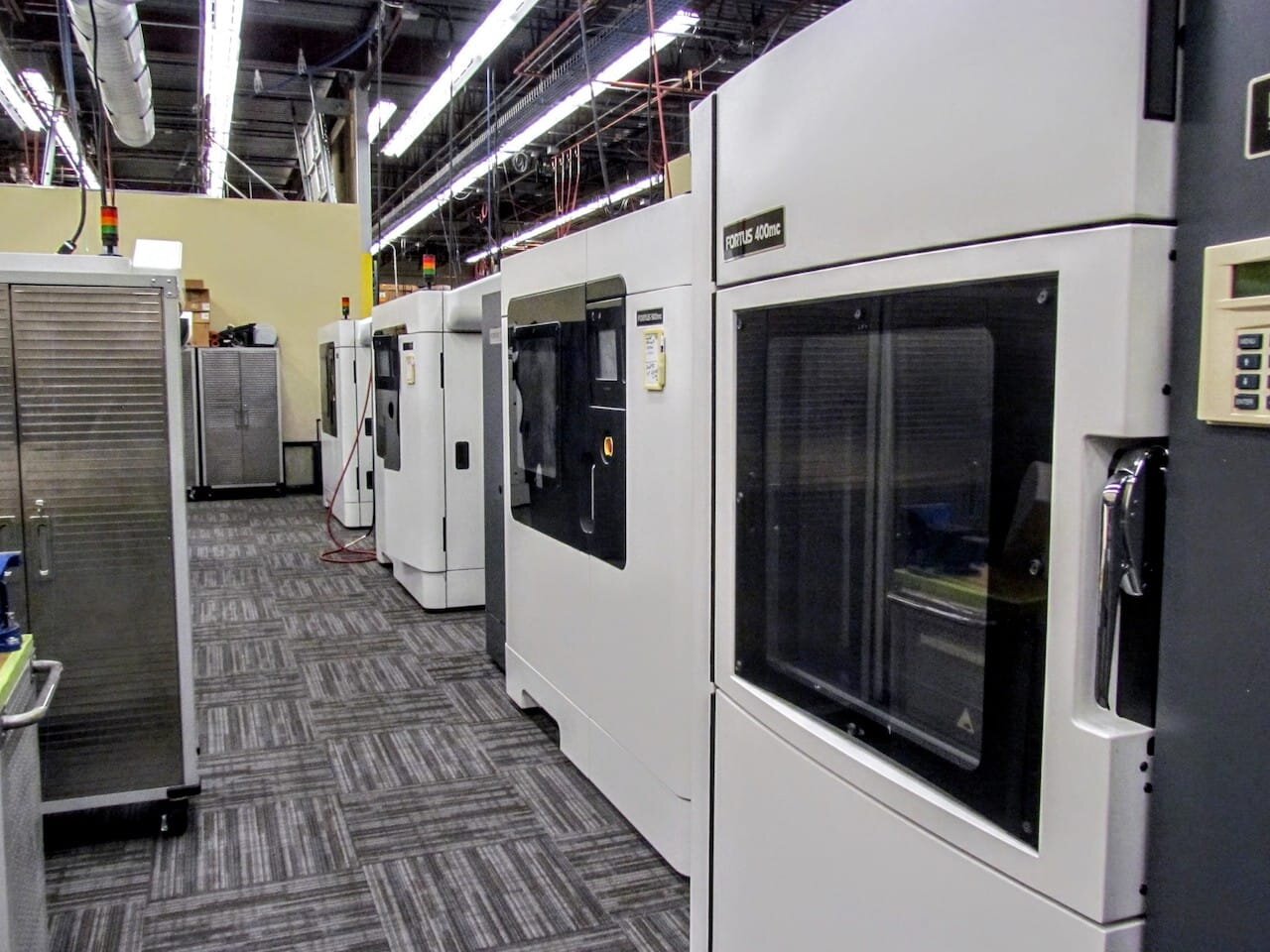![Factory 3D printers [Source: Fabbaloo]](https://fabbaloo.com/wp-content/uploads/2020/05/image-asset_img_5eb08cf445b7d.jpg)
I’m looking at the results of a survey of manufacturers that shows a surprising result.
The survey, undertaken by Essentium, sought answers from 162 manufacturing leaders located worldwide. They explored the use of and challenges with the adoption and use of 3D printing in manufacturing situations.
Additive Manufacturing Growth
The most notable statistic from the survey indicated that in 2018, 21% of respondents used 3D printing technology for “full-scale production”. But in 2019, the same question yielded a result of 40%! This almost doubles the number of organizations using 3D printing for manufacturing, and is closing in on fully half of all manufacturers.
That’s quite startling to me. For many years 3D printing has been a rogue technology that was used only for rapid prototyping in the back room lab by non-conforming designers. Eventually, with the introduction of new, more practical materials we began to see the use of the technology for actual end-use part production.
Aerospace Leads 3D Printing
There’s another factor I believe is involved here. After many years of experimentation, the aerospace industry finally got their heads around metal 3D printing and now is on the path to produce many radically new types of parts using the technology. I believe other industries have witnessed what happened in aerospace and are now considering attempting similar transformations in their own respective industries.
High Temperature 3D Printing
Another factor is the recent introduction of affordable high temperature 3D printers, which are able to use new advanced engineering materials that offer far more powerful mechanical, thermal and chemical properties. These newly available materials are far more suitable for end-use applications, thus opening the door for more production use.
These two factors could be the drivers for the dramatically increased use of 3D printing in manufacturing.
Additive Manufacturing Production Volumes
The survey also asked respondents about the volume of parts, perhaps to get a sense of what “production” really means, as 3D printers could be installed for prototyping or experimental use.
The question asked if the respondent used the technology for “runs of thousands of parts”. In 2018 only 17% of respondents did so. However, the 2019 response was an amazing 47%. This means about half of those using 3D printing technology are doing real production work with them.
Why are manufacturers doing this? The survey found a number of drivers pushing manufacturers towards use of 3D printing:
-
Reduced manufacturing costs (58%)
-
Improve customer response time (61%)
-
Mass customization (59%) believe they will benefit Increase speed-to-part production (59%)
-
Achieve high part performance (51%)
What is holding manufacturers back from doing even more 3D printed production? Again, there was a split of responses between several factors:
-
High cost of 3D printing materials (51%)
-
Expensive 3D printing hardware (38%)
-
Current 3D printing technology does not scale (31%)
These points are quite interesting, because while they are all currently true, the latter two points are likely to diminish in coming years, as 3D printer manufacturers are diligently working to lower costs through intense competition, and others are developing very large scale 3D printing solutions specifically for manufacturers, either through increased speed as Essentium is doing, or by volume, like Stratasys and Desktop Metal are working on.
As for the cost of materials, that’s likely to stay high, at least for now. I believe the introduction of major chemical companies to the equation will result in a number of monopolistic deals with 3D printer manufacturers that will hold prices high for some time.
These results are surprising, but quite welcome. Thanks, Essentium, for publishing this survey!
VIa Essentium


1 comment
Comments are closed.